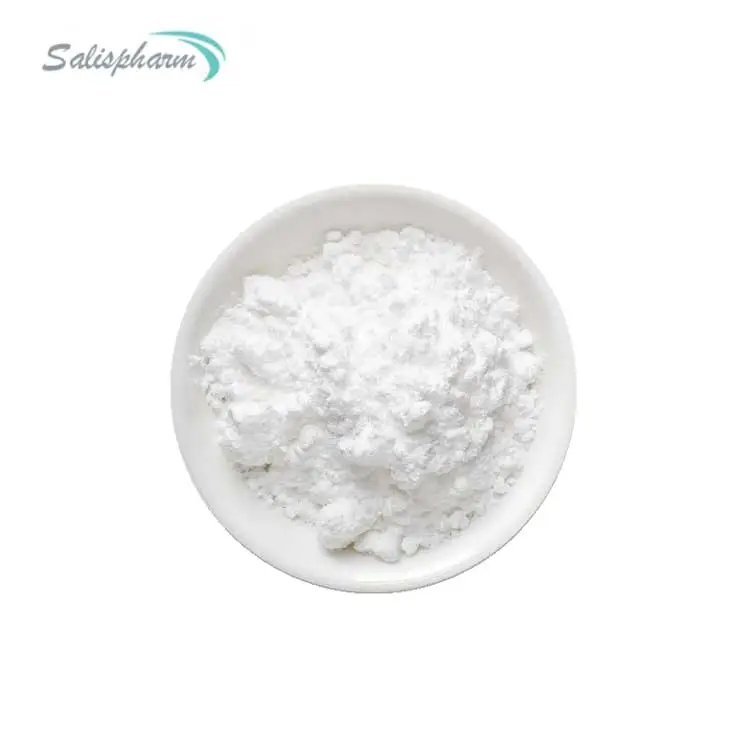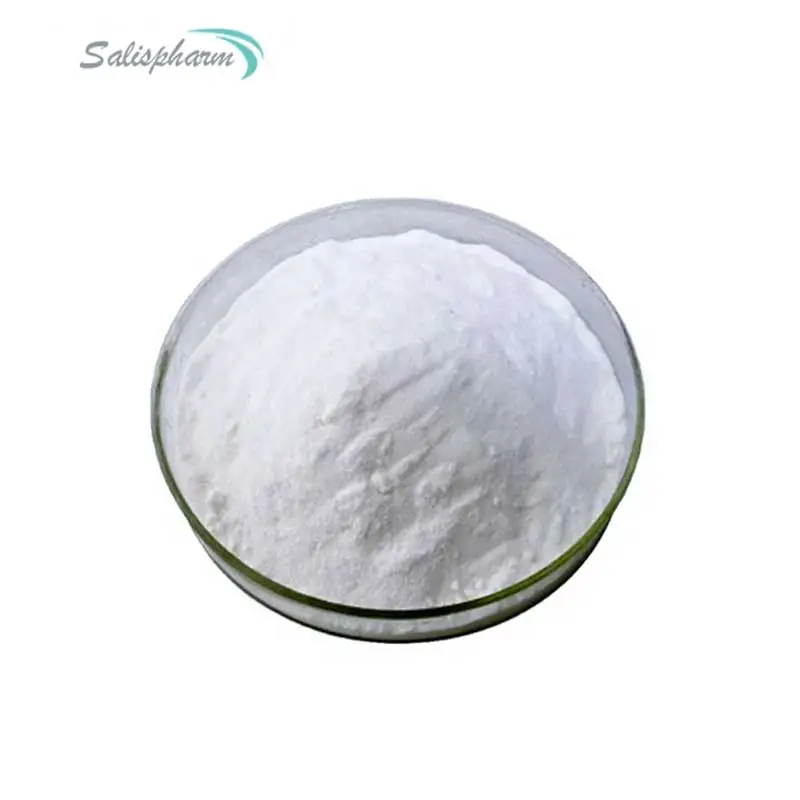Niclocide, also known as niclosamide, is an anthelmintic medication primarily used to treat tapeworm infections in humans and animals. It belongs to a class of drugs called antiparasitic agents and works by inhibiting the energy metabolism of tapeworms, leading to their death and elimination from the body. Niclocide has been in use for several decades and is considered an effective and safe treatment for various types of tapeworm infestations.
How does Niclocide work against tapeworms?
Niclocide's mechanism of action against tapeworms is both fascinating and highly effective. The drug primarily targets the energy production processes within the tapeworm's cells, disrupting their ability to survive and reproduce within the host's body. Specifically, Niclocide interferes with oxidative phosphorylation in the mitochondria of tapeworm cells, which is essential for generating adenosine triphosphate (ATP), the primary energy currency of cells.
When a patient ingests Niclocide, the drug is poorly absorbed by the human digestive system, allowing it to reach the tapeworms in the intestines largely intact. Upon contact with the tapeworm, Niclocide uncouples oxidative phosphorylation, essentially "short-circuiting" the parasite's energy production. This process leads to a rapid depletion of ATP in the tapeworm cells, causing paralysis and eventually death of the parasite.
Moreover, Niclocide has been shown to inhibit glucose uptake by the tapeworm, further compromising its ability to sustain itself. This dual action of disrupting energy production and limiting nutrient absorption makes Niclocide particularly effective against a wide range of tapeworm species, including Taenia saginata (beef tapeworm), Taenia solium (pork tapeworm), and Diphyllobothrium latum (fish tapeworm).
The effectiveness of Niclocide is not limited to adult tapeworms; it also acts on tapeworm eggs and larvae, preventing their development and breaking the parasite's life cycle. This comprehensive action is crucial in preventing reinfection and reducing the spread of tapeworm infections within communities.
Interestingly, the unique mechanism of action of Niclocide has led researchers to investigate its potential applications beyond tapeworm infections. Some studies have suggested that the drug's ability to interfere with cellular energy production might be harnessed to combat certain types of cancer cells or drug-resistant pathogens. However, these applications are still in the experimental stages and require further research before they can be considered for clinical use.
What are the side effects of taking Niclocide?
While Niclocide is generally considered safe and well-tolerated, like all medications, it can cause side effects in some individuals. Understanding these potential adverse effects is crucial for patients and healthcare providers to make informed decisions about treatment and manage any complications that may arise.
The most common side effects of Niclocide are generally mild and gastrointestinal in nature. These can include nausea, vomiting, abdominal pain, and diarrhea. These symptoms are often transient and typically resolve on their own without requiring discontinuation of the treatment. In some cases, these side effects may be mitigated by taking the medication with food or dividing the dose over the course of the day.
Less frequently, patients may experience dizziness, headache, or a temporary loss of appetite. Some individuals have reported a metallic taste in their mouth while taking Niclocide, which usually subsides after completing the course of treatment.
In rare instances, more serious side effects can occur. These may include allergic reactions, characterized by skin rashes, itching, or in severe cases, difficulty breathing or swelling of the face, lips, tongue, or throat. If any of these symptoms occur, immediate medical attention should be sought.
It's worth noting that Niclocide can sometimes cause a temporary increase in liver enzymes. While this is usually not clinically significant, patients with pre-existing liver conditions may require closer monitoring during treatment.
Pregnant women should use Niclocide with caution, as its safety during pregnancy has not been conclusively established. While animal studies have not shown harmful effects on the fetus, human data is limited. Therefore, the drug should only be used during pregnancy if the potential benefit justifies the potential risk to the fetus.
Interestingly, one of the unique aspects of Niclocide is its poor absorption by the human digestive system. This characteristic actually contributes to its safety profile, as it limits the drug's systemic effects on the body. However, it also means that Niclocide is not effective against tapeworms that have migrated outside the intestinal tract.
Healthcare providers should be aware of potential drug interactions when prescribing Niclocide. While significant interactions are rare, the medication may affect the absorption or metabolism of other drugs. For instance, it may reduce the effectiveness of oral contraceptives, so additional contraceptive measures are recommended during treatment.
Can Niclocide be used for other medical conditions?
While Niclocide is primarily known for its effectiveness against tapeworm infections, recent research has uncovered potential applications for this drug in treating a variety of other medical conditions. This expanding scope of use has sparked interest in the scientific community and opened up new avenues for drug repurposing.
One of the most promising areas of research involves the use of Niclocide in cancer treatment. Several studies have demonstrated that Niclocide exhibits antitumor properties against various types of cancer cells, including colorectal, breast, prostate, and ovarian cancers. The drug appears to work by inhibiting the Wnt/β-catenin pathway, which is often overactive in cancer cells and contributes to their proliferation and survival. Additionally, Niclocide has shown the ability to sensitize drug-resistant cancer cells to chemotherapy, potentially enhancing the effectiveness of existing cancer treatments.
Another exciting area of research is the potential use of Niclocide against viral infections. In vitro studies have shown that the drug has broad-spectrum antiviral activity against several RNA viruses, including SARS-CoV-2, the virus responsible for COVID-19. The exact mechanism of this antiviral action is not fully understood, but it is thought to involve the inhibition of viral replication processes. While these findings are promising, it's important to note that more research, including clinical trials, is needed to determine the efficacy and safety of Niclocide as an antiviral treatment in humans.
Niclocide has also shown potential in treating certain bacterial infections, particularly those caused by antibiotic-resistant strains. Studies have demonstrated its effectiveness against methicillin-resistant Staphylococcus aureus (MRSA) and other multi-drug resistant bacteria. The drug's unique mechanism of action, which differs from traditional antibiotics, makes it less likely for bacteria to develop resistance to it.
In the field of metabolic disorders, Niclocide has shown promise in treating type 2 diabetes and obesity. Animal studies have suggested that the drug can improve insulin sensitivity and reduce fat accumulation. These effects are thought to be mediated through the drug's ability to modulate mitochondrial function and energy metabolism.
Interestingly, Niclocide's potential extends even to neurodegenerative disorders. Preliminary research has indicated that the drug may have neuroprotective properties and could potentially be useful in treating conditions such as Parkinson's disease and Alzheimer's disease. The drug's ability to modulate cellular energy production and reduce oxidative stress may contribute to these neuroprotective effects.
Despite these promising findings, it's crucial to emphasize that most of these potential new applications for Niclocide are still in the early stages of research. While in vitro and animal studies have shown promising results, extensive clinical trials are needed to establish the safety and efficacy of Niclocide for these conditions in humans.
Moreover, the poor absorption of Niclocide in the human digestive system, which is advantageous for treating intestinal parasites, presents a challenge for its use in treating systemic conditions. Researchers are exploring various formulations and delivery methods to overcome this limitation and improve the drug's bioavailability for potential use in treating conditions beyond intestinal infections.
In conclusion, while Niclocide remains primarily used for treating tapeworm infections, ongoing research continues to uncover its potential in treating a wide range of medical conditions. From cancer and viral infections to metabolic disorders and neurodegenerative diseases, the versatility of this drug is becoming increasingly apparent. As research progresses, Niclocide may emerge as a valuable tool in the treatment of various diseases, potentially offering new hope for patients with conditions that currently have limited treatment options.
If you are also interested in this product and want to know more product details, or want to know about other related products, please feel free to contact iceyqiang@aliyun.com.
References:
1. Weinbach, E. C., & Garbus, J. (1969). Mechanism of action of reagents that uncouple oxidative phosphorylation. Nature, 221(5185), 1016-1018.
2. Chen, W., Mook, R. A., Premont, R. T., & Wang, J. (2018). Niclosamide: Beyond an antihelminthic drug. Cellular Signalling, 41, 89-96.
3. Xu, M., Lee, E. M., Wen, Z., Cheng, Y., Huang, W. K., Qian, X., ... & Tang, H. (2016). Identification of small-molecule inhibitors of Zika virus infection and induced neural cell death via a drug repurposing screen. Nature Medicine, 22(10), 1101-1107.
4. Jurgeit, A., McDowell, R., Moese, S., Meldrum, E., Schwendener, R., & Greber, U. F. (2012). Niclosamide is a proton carrier and targets acidic endosomes with broad antiviral effects. PLoS Pathogens, 8(10), e1002976.
5. Tao, H., Zhang, Y., Zeng, X., Shulman, G. I., & Jin, S. (2014). Niclosamide ethanolamine-induced mild mitochondrial uncoupling improves diabetic symptoms in mice. Nature Medicine, 20(11), 1263-1269.
6. Wieland, A., Trageser, D., Gogolok, S., Reinartz, R., Höfer, H., Keller, M., ... & Scheffler, B. (2013). Anticancer effects of niclosamide in human glioblastoma. Clinical Cancer Research, 19(15), 4124-4136.
7. Sack, U., Walther, W., Scudiero, D., Selby, M., Kobelt, D., Lemm, M., ... & Schlag, P. M. (2011). Novel effect of antihelminthic Niclosamide on S100A4-mediated metastatic progression in colon cancer. Journal of the National Cancer Institute, 103(13), 1018-1036.
8. Ye, T., Xiong, Y., Yan, Y., Xia, Y., Song, X., Liu, L., ... & Zhang, L. (2014). The anthelmintic drug niclosamide induces apoptosis, impairs metastasis and reduces immunosuppressive cells in breast cancer model. PLoS One, 9(1), e85887.
9. Pan, J. X., Ding, K., & Wang, C. Y. (2012). Niclosamide, an old antihelminthic agent, demonstrates antitumor activity by blocking multiple signaling pathways of cancer stem cells. Chinese Journal of Cancer, 31(4), 178-184.
10. Frayha, G. J., Smyth, J. D., Gobert, J. G., & Savel, J. (1997). The mechanisms of action of antiprotozoal and anthelmintic drugs in man. General Pharmacology: The Vascular System, 28(2), 273-299.









